by Professor Felicia Hardison Londré, Ph.D.
This article was originally published in the Bulletin of the Faculty of Letters, Hosei University (Tokyo, Japan), No. 39 (1993); republished on the SOF website May 11, 1993. Dr. Londré is Curators’ Distinguished Professor of Theatre, University of Missouri-Kansas City, author of 14 books, and recipient of several academic honors. See endnote for more details.
Among the many vivid character descriptions of Hamlet in Shakespeare’s play, Hamlet, are two very different ones that occur in the same scene (III.1), only about thirty lines apart. First, Hamlet paints a decidedly unflattering portrait of himself for Ophelia: “I am indifferent honest, but yet I could accuse me of such things that it were better my mother had not borne me. I am very proud, revengeful, ambitious, with more offenses at my beck than I have thoughts to put them in, imagination to give them shape, or time to act them in” [III.1.122].
It is worth noting here that the character like his author evinces a strong creative impulse, and that his creativity is tied to autobiography. In other words, Hamlet virtually admits to the artistic exploitation of his own “offenses,” shaping them in his imagination and acting them. He regards himself as both playwright and actor.
Moments later, after his exit, Ophelia wistfully recalls Hamlet’s “noble mind” and public image [III.1.151–55]:
The courtier’s, soldier’s, scholar’s, eye, tongue, sword;
Th’expectancy and rose of the fair state,
The glass of fashion and the mould of form,
Th’observed of all observers ….
The juxtaposition of these two seemingly incongruous bits of characterization, depicting one who has committed vile offenses against humanity alongside one who represents the highest accomplishments in manners, action, and thought, reasserts the obvious complexity of the most compelling figure in all of world drama.
Hamlet’s very depth and complexity suggests that the author must have invested much of himself in the character. Frank Harris, for example, commented that “in Hamlet Shakespeare has revealed too much of himself” [Looney I, 390]. Indeed, most scholars will concede a strong degree of probable identification between the character of Hamlet and his author.
I’d like to deal very briefly with that notion of author/character identification, and then move on to something more concrete: parallels between events in the play and documented events in the life of the most likely author of the play. That is, the play presents not only a psychological portrait of its author through the title character, but also an autobiographically-based narrative.
In his book The Search for an Eternal Norm, Professor Louis J. Halle concludes his careful analysis of Hamlet’s character: “On the internal evidence of the plays and poems as a whole, and of Hamlet in particular, I should then arrive at the conclusion that they had been written by someone who was so high of birth as to be a member of the royal entourage; a man profoundly maladjusted and in rebellion against the requirements of his birth and station…; a man who consequently had sought, on occasion, the kind of escape that Prince Hal found in the company of Eastcheap, who found his greatest relief in the composition of the poems and plays, and who consorted with acting companies in connection with the double life he led” [Halle 114].
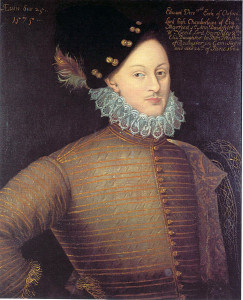
Halle’s description, like the two quotations I have extracted from the play, fits with remarkable exactness everything that is known and documented about the personality and circumstances of Edward De Vere, Seventeenth Earl of Oxford, who lived from 1550 to 1604, and who — according to all available evidence– is the most likely author of the plays and poems of William Shakespeare.
As an earl of Oxford, carrying such hereditary titles as Lord Great Chamberlain and Viscount Bolbec, Edward De Vere was as close to being a crown prince as anyone at the court of England; indeed, his so-called “crown signatures” hint that he may have had aspirations to the throne (he stopped using the signature with the “crown in it after Elizabeth I was succeeded by James I). Like Hamlet then, he harbored some ambition and just expectation of reigning.
During the decade of the 1570s, Oxford was a “golden boy” at court, a favorite of the queen, winning the championships at tournaments (where he shook and broke many a spear), encouraging and often carousing with men of letters like John Lyly, Anthony Munday, and Robert Greene, leading the courtly fad for Euphuism which is lampooned in Loves Labour’s Lost, sponsoring a theatre company that performed frequently at court, acting in court performances, and having dozens of literary works dedicated to him with extravagant praise for his own literary accomplishments.
On his return in April 1576 from a sixteen-month tour of France and Italy, the Italian fashions and manners he had adopted earned him the sobriquet “Italianate gentleman.”
Thus was De Vere, as Ophelia says of Hamlet, “the glass of fashion and the mould of the form, the observed of all observers.”
But what about the other lines I quoted, in which Hamlet accuses himself of being “proud, revengeful, ambitious”? Proud of his noble lineage De Vere certainly was, and in his youth his pride often bordered on arrogance.
The writing of Hamlet was in itself a “revengeful act,” as I will presently prove. Like all of us, De Vere had his human failings. In his maturity, he could reflect back on much that he was not proud of in his life.
Like Hamlet (who kills five people in the play), De Vere was a murderer, having killed an undercook named Thomas Brincknell at Cecil House when he was eighteen.
He treated his first wife as cruelly as Hamlet treats Ophelia, refusing even to see her for a five-year period when he rashly suspected her of infidelity. He fathered at least one child out of wedlock. He secretly embraced Catholicism and then turned upon his Catholic friends, betraying them to the queen.
In his youth, he was spendthrift and temperamental, though he later came to disdain worldly trappings and courtly involvements. He was, in sum, quite unlike the traditional “Bard of Avon” that so many critics seem to see as a candidate for sainthood.
In relating the action of the tragedy of Hamlet to events in Oxford’s life, I am indebted to many sources. I have not myself delved into London’s Public Record Office or the archives at the Huntington Library, but instead have drawn freely upon the work of other scholars to offer here what is only a synthesis and a brief overview of a huge subject. Nor do I have time to present the available evidence for such peripheral matters as the dating of the play. Anyone who is interested in pursuing such matters may readily was turn to my major sources: Eva Turner Clark, J. Thomas Looney, and the Ogburns.
Thus, I am simply going to posit that on the basis of the topical as a references in Hamlet, Oxfordian scholars are unanimous in pinpointing 1583 as the date of the play’s original composition.
The fact that the First Quarto did not appear until 1603 is readily explained by the fact that, given its unmistakable lampoon of the queen’s Lord High Treasurer William Cecil, Lord Burghley, the text could not be published during his lifetime (Burghley died in 1598.) However, there is substantial evidence that the play was known in performance by 1589 at the latest [Dorothy and Charlton Ogburn 649-50].
The action of Hamlet covers events in Oxford’s life up to 1583. Undoubtedly, he continued revising the work, perhaps until his death in 1604, for while the action is not altered, the philosophical content and the poetry do gain in maturity from the First to the Second Quarto and the Folio. This might also explain why Hamlet seems to age so quickly from being a callow student at the beginning to the thirty-year-old at Ophelia’s grave. And Hamlet’s final lines, which do not appear in the First Quarto, are certainly the concern of the artist in his later years.
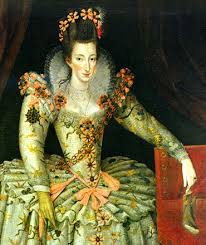
In June of 1583 Oxford returned to court after more than two years’ banishment. He had fallen from favor with Queen Elizabeth in January 1581 in the aftermath of his denunciation of the Catholic plot and also because it had become known that a lady-in-waiting, Anne Vavasour, was to bear Oxford’s illegitimate child (their son was born in March 1581, and De Vere was subsequently punished by being imprisoned for a time in the Tower of London).
Oxford’s reconciliation with the queen brought only short-lived gratification, for the Earl of Sussex died in July. It was Sussex who, as Lord Chamberlain, had encouraged Oxford’s participation in the presentation of plays at court, but now Oxford’s best actors were conscripted to join the newly formed Queen’s Company. Furthermore, the high-minded and principled Sussex had served as a kind of surrogate father to Oxford throughout the 1570s, during which time Sussex had also been hounded and harassed by the queen’s favorite, Robert Dudley, the conniving, self-seeking Earl of Leicester.
Although it is not generally believed that Leicester had any direct connection with Sussex’s sudden death, Leicester’s name was certainly linked with traffic in poisons, especially after the mysterious death of his wife Amy Robsart and others. In sum, the Earl of Sussex was undoubtedly the model for the Ghost in Hamlet, and Leicester represented Claudius.
Without the presence of the noble Sussex, Oxford found himself in a radically-changed court. The Queen’s new favorites were ruthless men: Leicester, Christopher Hatton, and Sir Walter Raleigh, all of whom like Lord Burghley had once been commoners, but had flattered and politicked their way to favor and titles.
Hamlet frequently expresses his disgust with this class of people and with the general corruption he sees at Elsinore, as when he refers to “the insolence of office, and the spurns that patient merit of the unworthy takes” [III. 1. 74-5], or comments that “the age is grown so picked that the toe of the peasant comes so near the heel of the courtier he galls his kibe” [V. 1. 132-3]. It must have rankled with Oxford when he learned that his restoration to favor had been achieved through his father-in-law’s solicitous appeals on his behalf to skunks like Leicester. Thus, it is really Oxford speaking to Elizabeth when Hamlet tells this to Gertrude in the closet scene [III. 4. 140-151]:
Mother, for love of grace,
Lay not a flattering unction to your soul,
That not your trespass but my madness speaks.
It will but skin and film the ulcerous place
Whilst rank corruption, mining all within,
Infects unseen. Confess yourself to heaven;
Repent what’s past; avoid what is to come;
And do not spread the compost o’er the weeds
To make them ranker. Forgive me this my virtue;
For in the fatness of these pursey times
Virtue itself of vice must pardon beg.
Yea, curb and woo for leave to do him good.
The phrase “my madness speaks” is particularly significant in that Oxford, despite his past intimacy with Elizabeth, could not speak these things directly to her. Oxford never played politics; often his most ill-considered Oxford acts were motivated by idealism. Hamlet, too, avoids political intrigue; his method is to feign madness.
Hamlet’s madness is the equivalent of Oxford’s seeking creative compulsion–what Dorothy and Charlton Ogburn call a “furor poeticus”[699]—Oxford’s ability to transmute his problems and experiences into art, and thereby express what could not be said directly. In death feigning madness, Hamlet is acting a self-created role, and thus his “madness” might be seen as a metaphor for creative artistry, the only available escape mechanism from otherwise intolerable circumstances.
The play’s setting employs information that was directly available to Oxford, but not to the general public. Oxford’s brother-in-law and close friend, Lord Willoughby d’Eresby was sent in 1583 as emissary to the court at Elsinore. Willoughby’s eyewitness reporting of details about Kronberg Castle and Danish customs like the “cannon health” must have enabled De Vere to write as accurately as he did of a place he had not seen or visited himself. There were actual gentlemen named Rosencrantz and Guildenstern at the court of Denmark. The great hall in Kronberg was divided by a huge arras, a tapestry into which were woven portraits of the Danish kings. Thus, when Hamlet tells Gertrude to compare the two brothers’ portraits, he is pointing to an arras like the one that actually hung at Elsinore.
When Hamlet/Oxford returns to court, his father is dead and the Queen’s paramour is a smiling villain. There is yet another parallel in Oxford’s life with this situation in Hamlet. Edward De Vere’s real father, the Sixteenth Earl of Oxford, had died suddenly when young Oxford was only twelve, and his mother remarried very shortly thereafter.
As Hamlet observes, “the funeral baked meats did coldly furnish forth the marriage tables.” De Vere had little respect for his stepfather, Charles Tyrrell, nor is there evidence in surviving letters of much warmth in his relationship with his mother. It may be pertinent to note that Hamlet is one of only two Shakespeare plays that feature a mother-son relationship (the other is Coriolanus). An obsession with fickleness in women is evident not only in the Shakespeare plays and sonnets, but also in the early poems attributed to De Vere, and this obsession relates to both his mother and the most important woman in his life, Queen Elizabeth.
At the time of the Sixteenth Earl of Oxford’s death, Sir William Cecil was beginning his lucrative appointment as Master of the Wards; that is, Cecil served as legal guardian for sons of the nobility who were not yet of legal age when their fathers died. Thus, the orphaned twelve-year-old Edward De Vere was sent to live for the next eight and a half years at Cecil House in the Strand in London, and at Theobalds, which was Cecil’s country house and boasted the finest garden in England.
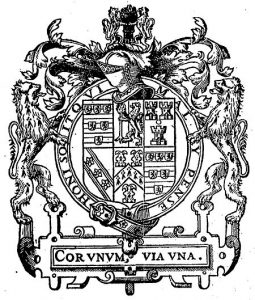
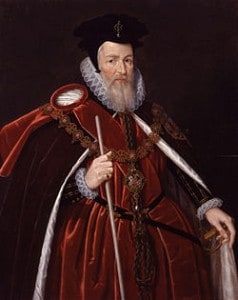
Unfortunately for the boy, William Cecil, the future Lord Burghley, exercised complete financial control over his ward’s estate until Oxford was twenty-one, during which time Cecil amassed astounding wealth. Thus, Oxford grew up in the household of the man who is generally acknowledged to have been the real-life model for Polonius in Hamlet. In fact, the First Quarto version of Hamlet gives that character the name Corambis, which is Latin for “two- hearted, and clearly mocks Cecil’s motto, Cor unum, via una (One heart, one way).
Furthermore, Burghley presided over the law court that had jurisdiction over the writ of Coram Nobis, pertaining to “those who lost their rights during a period of insanity or minority” [Looney II, 442]. It is not surprising that only two copies of the 1603 quarto are extant and that the character’s name was subsequently changed; the clue would have been too obvious for the Cecil family to countenance.
Most of the links between Lord Burghley and Polonius, however, were private jokes that would have been caught only by intimates of the court. One amusing example mocks Burghley’s frequent boast (as a good Protestant) that he had been born during the Diet of Worms in 1521, when Martin Luther had stood firm against the Holy Roman Emperor. After Hamlet has killed the old man and life Claudius asks, “Where’s Polonius?” Hamlet replies: “A certain convocation of politic worms are e’en at him. Your worm is your only emperor for diet”.
The author of Hamlet knew things about Cecil and his family that could only have been known to a member of the household. Polonius’s advice to Laertes (“Give thy thoughts no tongue …,” etc., I. 3. 59-80) unmistakably echoes in the maxims Burghley wrote out for his son Thomas Cecil when the latter set off to study in Paris. Burghley wrote, for example: “Let thy hospitality be moderate … rather plentiful than sparing, for I never knew any man grow poor by keeping an ordinary table. … Beware thou spendest not more than three of four parts of thy revenue. … Beware of being surety for thy best friends; he that payeth another man’s debt seeketh his own decay. Be sure to keep some great man thy friend, but trouble him not with trifles; compliment him often with many, yet small, gifts. Towards thy superiors, be humble, yet generous. … Trust not any man with thy life, credit, or estate, for it is mere folly for a man to enthrall himself to his legal friend’ [Clark 647].
These handwritten precepts were not published until 1618 [Looney II, 432].
Dr Louis Wright, former director of the Folger Shakespeare Library, has acknowledged the unlikelihood of any commoner’s house (like Shaksper of Stratford) having seen a private manuscript of the Lord Treasurer; and even if a commoner had somehow gained access to it, he would certainly not have dared to make it an object of satire [cited by Miller in Looney I, xxxvii].
Not only was Edward De Vere thoroughly exposed to these precepts as well as to innumerable letters written in Burghley’s ponderous style, but he also had the motive and the courage to mock his powerful guardian. The overbearing Burghley had enriched himself at his ward’s expense, regularly employed spies to report on Oxford’s activities (the way Polonius employs Reynaldo), and exercised tyrannical control over Oxford’s reputation as well as his private papers.
And there was still more.
In 1571 Cecil was elevated to the peerage. Named Lord Treasurer in 1572, that William Cecil, Lord Burghley was Elizabeth’s powerful right-hand man for been forty years. He cleverly consolidated his gains and permanently allied his family with the illustrious Oxford lineage by marrying his fourteen-year- old daughter Anne Cecil to twenty-one-year-old Edward De Vere.
It is interesting that the author of Hamlet chose the name Ophelia for Anne Cecil’s counterpart, as this is a Greek name meaning “a help, a source of firm gain” [Looney II, 442]. The Queen approved the marriage, undoubtedly aware that the sweet but vapid Anne Cecil could never rival herself in holding the interest and attention of the brilliant young earl. The relationship of Oxford and Queen Elizabeth, like that of Hamlet and Gertrude, was that of an attractive and talented man in his prime to a powerful and fascinating older woman.
Seventeen years older than Oxford, Elizabeth served as a kind of mother figure to the young courtier, but there are numerous indications that she and he may have been lovers for a time before his banishment. Anne Cecil, on the other hand, remained all her life her father’s puppet. Though Anne undoubtedly loved her dazzling but erratic husband, she could be manipulated by her father to report on Oxford’s doings. One is reminded of Ophelia’s lying to Hamlet about her father’s whereabouts, although she knows that Polonius is eavesdropping on their encounter [III. 1. 131-2].
In 1575 Oxford finally won permission from Elizabeth to make a long-coveted trip on the continent. Perhaps it was in order to keep the costs down that he travelled with only a meager retinue by comparison with most nobility on the road in those days; the eight who accompanied him were two gentlemen, two grooms, a payend, a harbinger, a housekeeper, and a trencherman [Roe 10]. Hamlet mentions a similar poverty: “I am most dreadfully attended. … Beggar that I am, I am even poor in thanks [II. 2. 267, 270].
Such travels were dangerous, and Burghley must have felt concern that his daughter had not yet borne a child to Oxford to validate his family’s tie to the ancient De Vere lineage.
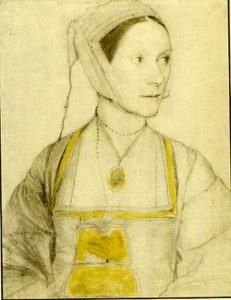
On the road, Oxford received word that Anne was with child. However, when he stopped in Paris on his return from the year and a half of travels in France and Italy, his equanimity was shattered: an Iago-like acquaintance convinced him that the child was born too long after his departure to be his own. During his return crossing of the English channel, De Vere’s ship was attacked by pirates. It has been conjectured that the Earl of Leicester had employed them to do away with Oxford, just as Claudius sends Hamlet to his death.
In any case, no Oxford seems to have convinced the pirates, much as Hamlet does, that he was in a position to offer them better terms than their original employer. When his ship docked, the enraged Oxford brushed aside his wife and father-in-law, who had come to meet him. For five years, De Vere refused to see his baby daughter Elizabeth or live with his wife Anne, the pathetic little Countess of Oxford, who suffered greatly by her husband’s cruel treatment. Later, Oxford seems to have regretted his rash acceptance of an unfounded rumor and worked out his remorse in a number of plays on the subject of a wife or sweetheart wrongfully suspected of infidelity: Othello, The Winter’s Tale, Cymbeline, The Merry Wives of Windsor, Much Ado About Nothing, The Comedy of Errors, and Measure for Measure.
And yet the question of the paternity of little Elizabeth Vere remains not entirely settled. Ophelia’s description of Hamlet’s visit to her chamber has a ring of authenticity about it: “He took me by the wrist, and held me hard. Then goes he to the length of all his arm, but And, with his other hand thus o’er his brow, He falls to such perusal of my face As he would draw it. Long stayed he so. At last, a little shaking of mine arm, And thrice his head thus waving up and down. He raised a sigh so piteous and profound That it did seem to shatter all his bulk And end his being. This done, he lets me go, And with his head over his shoulder turned, He seemed to find his way without his eyes, For out o’doors he went without their help, And to the last bended their light on me” [II. 1. 88-101].
These are not the actions of a man perturbed by the sudden coldness Ophelia shows toward him after Polonius has ordered her to play hard-to-get. Hamlet’s perusal of Ophelia’s face and piteous sigh are the response of a man who has learned of some unspeakable deed.
The secret comes very close to breaking through the subtext in Act II, Scene 2, after Hamlet taunts Polonius with being “a fishmonger. (Incidentally, that epithet refers to Burghley’s having put through a bill prohibiting meat on Wednesdays, in addition to Fridays, in order to promote the fishing industry [Clark 675-7].) “I would you were so honest a man, Hamlet says, followed by a couple of non sequiturs, and then the abrupt, “Have you a daughter? … Let her not walk i’ th’ sun. Conception is a blessing. But not as your daughter may conceive–friend, look to’t [II. 2. 174-185].
Later in the scene, Hamlet calls Polonius a Jephthah after the Biblical character who had “one fair to see daughter, and no more,/The which he loved passing well [II. 2. 400-1]. During the play-within-the-play scene, Hamlet engages in bawdy banter with Ophelia, culminating in his bitter taunt: “So you mis-take your husbands [III. 2. 235]. Critics of the play have occasionally noted, with no object of reference to Oxford’s life, that Ophelia behaves like a victim of sexual abuse.
If Polonius had forced her into an incestuous relationship, he would, of course, be very careful to prevent any occasion for pre-marital dallying between Ophelia and Hamlet, because Hamlet’s discovery of Ophelia’s lack of virginity, whether or not he learned that it was incest, would certainly frustrate Polonius’s prime objective: to marry his daughter to the heir to the throne. In the case of Oxford, Burghley, and Anne, the father’s impregnation of his daughter would have been a calculated risk to ensure a lineage that could claim nobility.
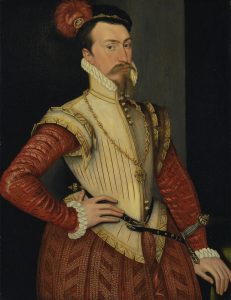
Through the writing of Hamlet, Oxford could safely vent his spleen about corruption that he witnessed at court, just as Hamlet uses The Murder of Gonzago to confirm an existing evil. Through the medium of the play, Oxford could vicariously take revenge on those whom he felt had wronged him. While Hamlet kills Polonius with a sword, Oxford (using those same a letters s-w-o-r-d, rearranged to w-o-r-d-s) skewed his irritating father-in-law Lord Burghley by lampooning him with words. With the re-enactment of the poisoning of a king in The Murder of Gonzago, Hamlet provokes Claudius into what he considers a revelation of guilt for a similar deed. Could Oxford have been using Hamlet’s tale of being attacked by pirates as a similar provocation to test the Earl of Leicester?
J. Dover Wilson makes a useful point about the play-within-the-play sequence at Elsinore [164ff]. In The Murder of Gonzago, the poisoner is not the king’s brother as we would expect, but his nephew. While Claudius’s reaction may arise from guilty self-recognition, the consternation among the rest of the courtiers (not to mention Gertrude’s comment, “Hamlet, thou hast thy father much offended”) can only be motivated by the implied threat inherent in the enactment of the king’s murder by his nephew. A courtly audience, ever sensitive to political subtext, would be justified in supposing that Hamlet is anxious to get on the throne. No wonder Gertrude is so jumpy when Hamlet comes to her closet (“What wilt thou do? Thou wilt not murder me ?” [iii. 4. 22]) No wonder Claudius uses his personal safety as a pretext for shipping Hamlet off to England!
This is not to suggest that Oxford would have been capable of assassinating Robert Dudley, Earl of Leicester, but he certainly might unleash his power with words to topple the villain who seemed to hold such sway over the queen. Charles Boyle further suggests that Hamlet’s calculated offense serves notice that, if pressed, he too is capable of playing politics; and Oxford, by extension, is saying that he’s willing to participate in a cover-up if it will protect Elizabeth.
In the play, Hamlet’s closest associates are Horatio, and the soldiers Francisco, Barnardo, and Marcellus. According to Judge Minos D. Miller, “Francisco and Horatio Vere were Lord Oxford’s first cousins; they were sons of Lord Oxford’s father’s brother. … A Marcellus was knighted on the battlefield at the same time as Francisco was knighted. … Horatio was very close to his first cousin, the seventeenth Earl of Oxford. For some time, Horatio had custody of Lord Oxford’s illegitimate son, Colonel Edward Vere. … We find it particularly appropriate that Hamlet’s dying speeches are addressed to Horatio.”
To conclude, it’s only right that I allow Edward De Vere to speak for himself in the person of Hamlet. For a man to whom artistic expression was his very lifeblood, the restriction against the use of a noble name on any wronged work destined for public consumption must have been a source of personal anguish. Oxford undoubtedly defied convention by acting some roles that called for heavy disguise, like Adam in As You Like It and the Ghost in Hamlet. The latter role would, of course, explain the famous reference to Shakespeare’s having “played some kingly parts in sport” [Clark 649].
The Cecil family’s stranglehold on Oxford’s name must have been in his mind when he wrote Hamlet’s final lines:
O, I could tell you….
But let it be. Horatio, I am dead.
Thou livest. Report me and my cause aright
To the unsatisfied.
********************
O God, Horatio, what a wounded name,
Things standing thus unknown, shall I leave behind me!
If thou didst ever hold me in thy heart,
Absent thee from felicity awhile,
And in this harsh world draw thy breath in pain
To tell my story.
Endnote
Felicia Hardison Londré, Ph.D., is Curators’ Distinguished Professor of Theatre, University of Missouri-Kansas City. She is the author of 14 books, including her favorite, The Enchanted Years of the Stage: Kansas City at the Crossroads of American Theatre, 1870–1930 (2007), as well as Love’s Labour’s Lost: Critical Essays (1997).
Professor Londré was inducted in 1999 into the College of Fellows of the American Theatre at the Kennedy Center in Washington, D.C., and in 2001 was honored by the Association for Theatre in Higher Education’s as Outstanding Teacher of Theatre in Higher Education. In 2011 she received the Betty Jean Jones Award for Outstanding Teacher of American Theatre and Drama. Dr. Londré served as founding secretary of the Shakespeare Theatre Association of America and president of the American Theatre and Drama Society, and has held visiting professorships at Hosei University in Tokyo, Japan, and Marquette University in Milwaukee, Wisconsin. In addition to Japan, she has lectured in China, Russia, France, Italy, Belgium, and Hungary. She worked as dramaturg for Missouri Repertory Theatre (1978–2000), as well as for Heart of America Shakespeare Festival and Nebraska Shakespeare Festival. Click here for more details of her distinguished academic career.


